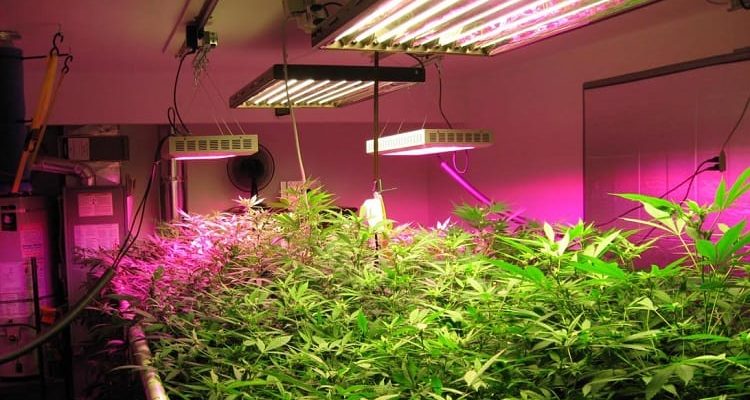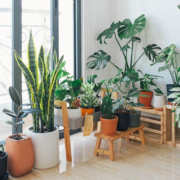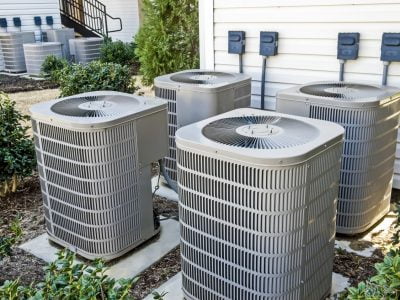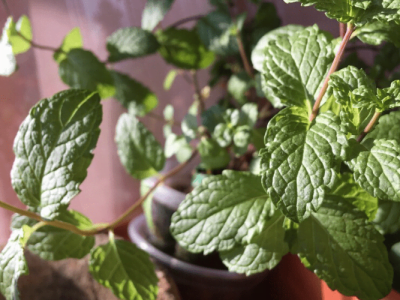People who live in apartments, flats, or any other place with less space for gardening can still love gardening or growing plants indoors. Many people have opted to use artificial lights and grow flowers, plants, herbs, and even vegetables indoors.
The lights that help your plants grow inside are LED; by placing your plants underneath those lights, you can grow them just like regular plants.
These lights are perfect for when you want to grow a plant from a seed or even by cuttings; they make sure that your plant is green and healthy. You can grow any seasonal plant, herbs, or vegetable underneath them; they do not stick to a particular season’s crops. You can select from a wide range of lights and choose the best one for your plants.
With the help of indoor lights, you can grow your plants, fruits, and even vegetables and have your mini garden inside. There are plenty of plants you can choose from, and similarly plenty of shelves too.
Few examples that you can take on how the LED lights work and show in your area be:
- PRODUCT DETAILS: Gardener's Supply Indoor Greenhouse Plant Grow Light System Set The frame is made...
- BEST USE FOR: Indoor Plant Gardening and Herb Succulent Growing This ultra-bright grow light is...
- HIGH QUALITY BUILT: Gardener's Supply EXCLUSIVE MEASUREMENTS: Frame Size: 38-1/4"" L x 18-3/4"""" W...
- EASY TO SET: ASSEMBLY REQUIRED It can be assembled within a few minutes using basic tools to fix the...
- INDOOR GARDEN TESTED & GUARANTEED: Every purchase you make is 100% guaranteed. We will exchange or...
- PRODUCT DETAILS: Gardener's Supply Indoor Greenhouse Plant Grow Light System Set The frame is made...
- BEST USE FOR: Indoor Plant Gardening and Herb Succulent Growing This ultra-bright grow light is...
- HIGH QUALITY BUILT: Gardener's Supply EXCLUSIVE - Our Grow Light System Set is proudly MADE IN THE...
- EASY TO SET: ASSEMBLY REQUIRED It can be assembled within a few minutes using basic tools to fix the...
- INDOOR GARDEN TESTED & GUARANTEED: Every purchase you make is 100% guaranteed. We will exchange or...
- Natural Spectrum daylight
- Optimum light for healthy plants
- Bright true colors and high contrast
- Height adjusts between 15" And 25. 5"
Apart from these stands, there are plenty more stands you can choose from, ranging from their material to rows to everything else. There are also kits available that you can buy and plant yourself; they come with the stand. Not only that, but you can also choose the grow lights, bulbs, indoor garden accessories like heating mats, stands, plug-ins, hooks, and many more.
With their grow kits and other accessories, you can quickly start your growing plant’s process and try it for the first time without any hassle or tension. Try it today, and you will fall in love with their products.
Sunlight is the most critical thing plants need for growth; it is the complete spectrum of light; similarly, indoor plants need a light with the same spectrum; otherwise, they will not grow.
The lights which produce full-spectrum are LED and Fluorescent lights. Both lights have been full-spectrum and produce a balance of warm and cold lights perfect for seeds, microgreens, herbs, and even vegetables.
But the Question is Should You Use LED or Fluorescent Lights?
LED or light-emitting diode is a light source that emits light when current passes through it. It produces light, which is 90% more efficient than fluorescent lights. LEDs have proved to be the best light to grow plants and food, even in space. With these lights’ innovations, it has become the best choice to grow seedlings, small fruits, and greens.
Since both lights produce a full spectrum light and are suitable for plants, LED, lights are the most recommended for indoor plants, herbs, and vegetables. LED lights are the safest for the environment and are also relatively cheap.
Few LEDs are specifically made for the plants, like the one available at Gardener’s supply company. Their LEDs are energy-efficient, economical, effective, and are made specifically for indoor plants.
The LED lights produce bright and full-spectrum lights that your plants want, along with the bright white light; it also produces a glare of blue light, which helps in healthy root growth, enhances photosynthesis, and ensures profitability growth of your plants.
High-Tech LEDs are great for indoor plants; they are made explicitly for them. They are efficient since they use less of your electricity and work more than fluorescent lights, and are environment-friendly.
High-output LEDs are better than the standard LEDs; they produce twice the brightness than the normal ones. You do not need to adjust its height, even when the little seedlings have converted into full-grown plants.
When Buying LED Lights, Some of the Factors That You Should Consider Are:
Intensity – The intensity of light will depend on how much brightness or spectrum of light is produced by that bulb and how close it is to your plant. The intensity of LED lights also depends on what type of plant you use; if you want to grow a tropical plant or only grown in forests, you won’t need to use much light compared to those plants that grow in dry regions.
Similarly, for flowers, some prefer less light, and some require more. The plants bearing fruits and vegetables require the maximum light they can get compared to flowers or familiar plants.
Heat – One advantage or benefit of LED lights is that they do not generate much heat, which means that you can keep the young plants that have just bloomed closer to the light, give them the high light, and not risk burning them. And once your plant has grown, you can keep it a little far away so that the leaves do not touch the light and get burned.
Timing – Every plant requires a good night’s rest. When a plant is outdoors in the natural sunlight, it absorbs the sunlight as much as it can, and when it gets dark, the plant-like rest of us also sleeps, or in other words, they respirate during that time.
Similarly, when you are growing plants indoors, you need to keep the light on during the day so that the plant can take in as much energy it can, and at night switch off the lights to let them sleep.
If you forget to turn off the lights, you can choose the lights with a built-in timer so that the lights can go off and you do not have to worry.
Plants – It is essential to select a good LED light that will help in your plant’s growth, but it is also essential to see which type of plants you are growing. Like for example, plants like begonias or chrysanthemums require less than 12 hours of light per day. All the fruits and vegetable plants require at least 14 to 18 hours of light per day.
You also have to make sure how tall your plant will get because if you buy a mini tabletop or shelf, you would need to move the plants to a giant shelf when they are grown since there is a risk of burning the leaves. However, if you use high output LEDs, you do not have to worry about shifting your plants.
Conclusion
Can you grow plants indoors? The answer is yes, you can. With LED lights’ help, you can quickly grow your plants indoors and have a luscious greenery environment.
These lights are cheap, but they use less electricity, are environment friendly, and run faster and more effectively than fluorescent lights.
With these lights’ help, you can grow any plant that you want, any flower, or even an herb. It does not matter if you wish to grow a plant by seedlings or by cutting the leaves and putting them in the soil. With the correct lighting and a perfect box, you can grow as many plants as you want.
You should keep in mind several factors before starting your plant growing process because we all know it is a bit risky, and one mistake can make your whole plant grow poorly.
You should always find the right spot where you can place your plants; if you place them near your window, your plants will receive twice the nutrients they want, which is beneficial.













Comments